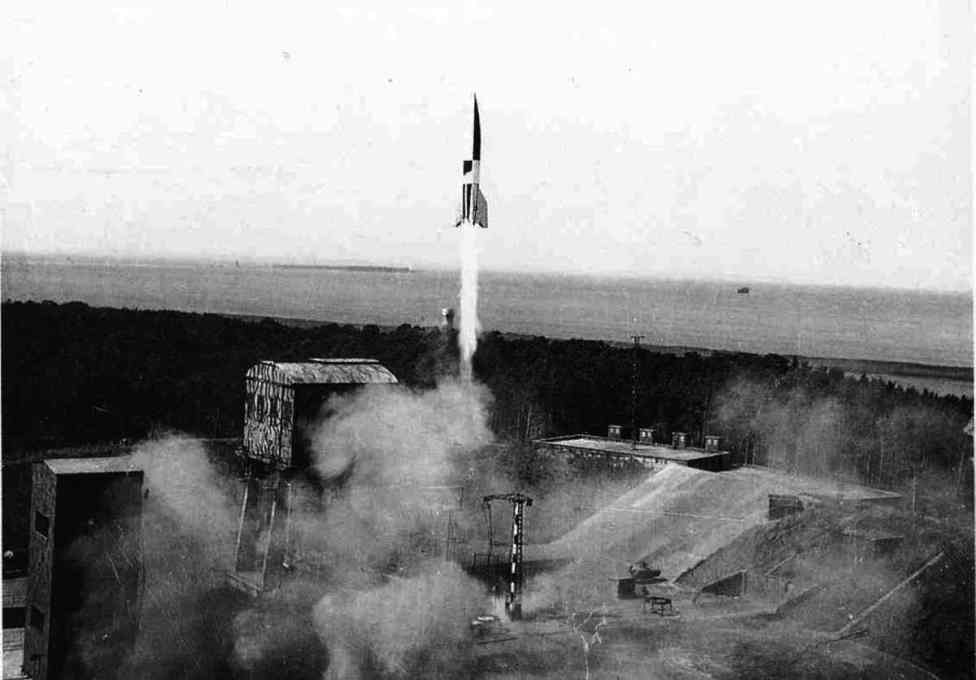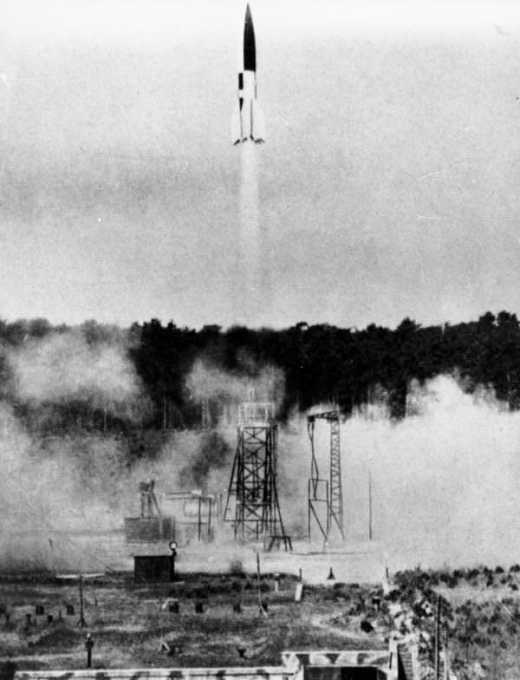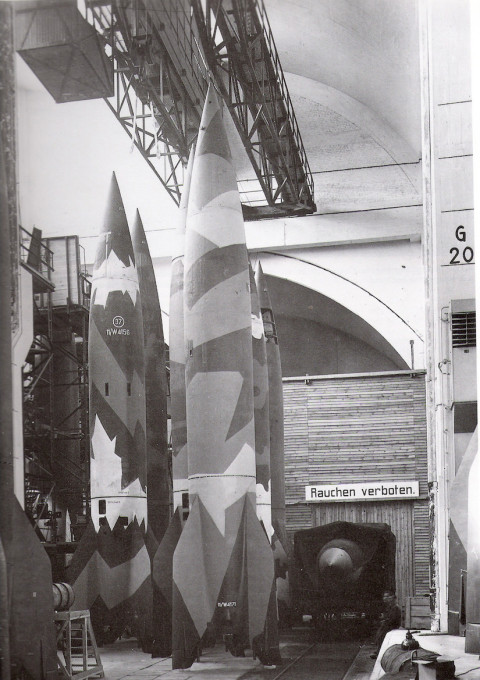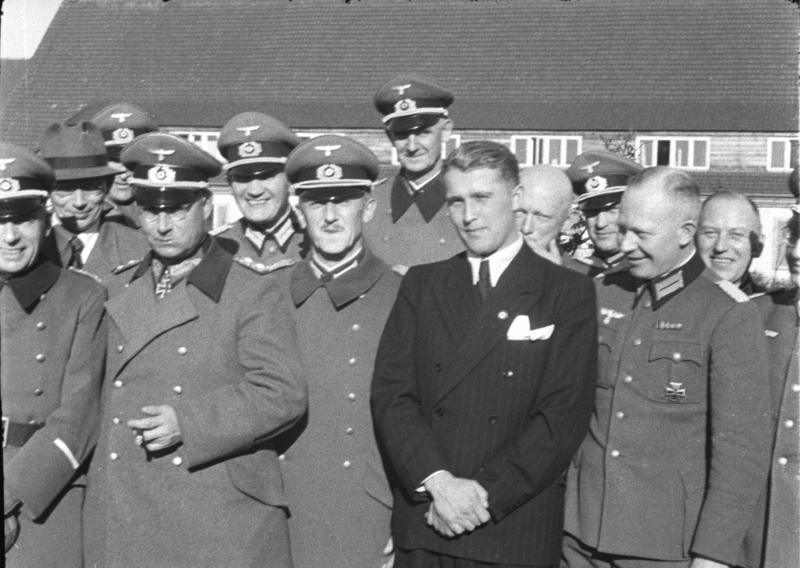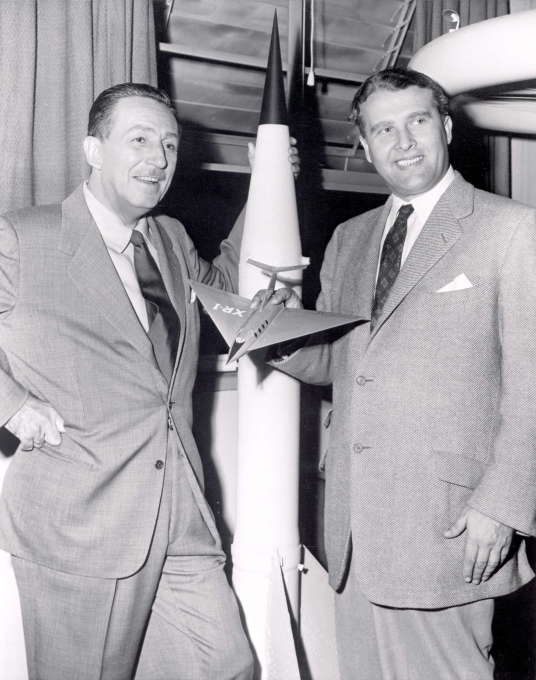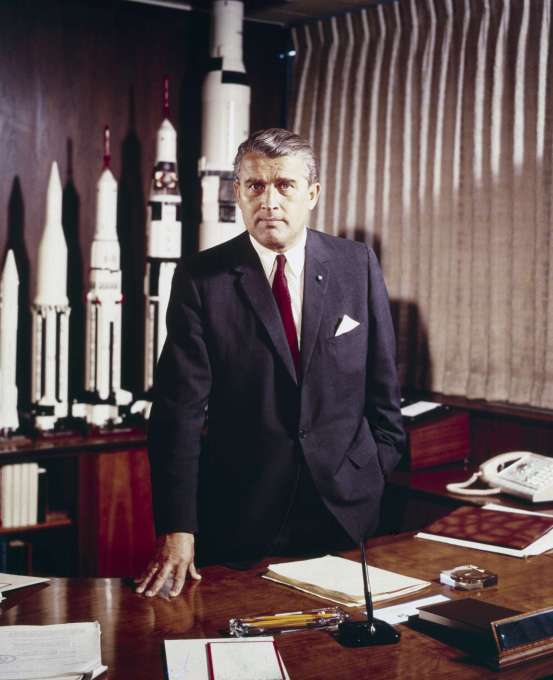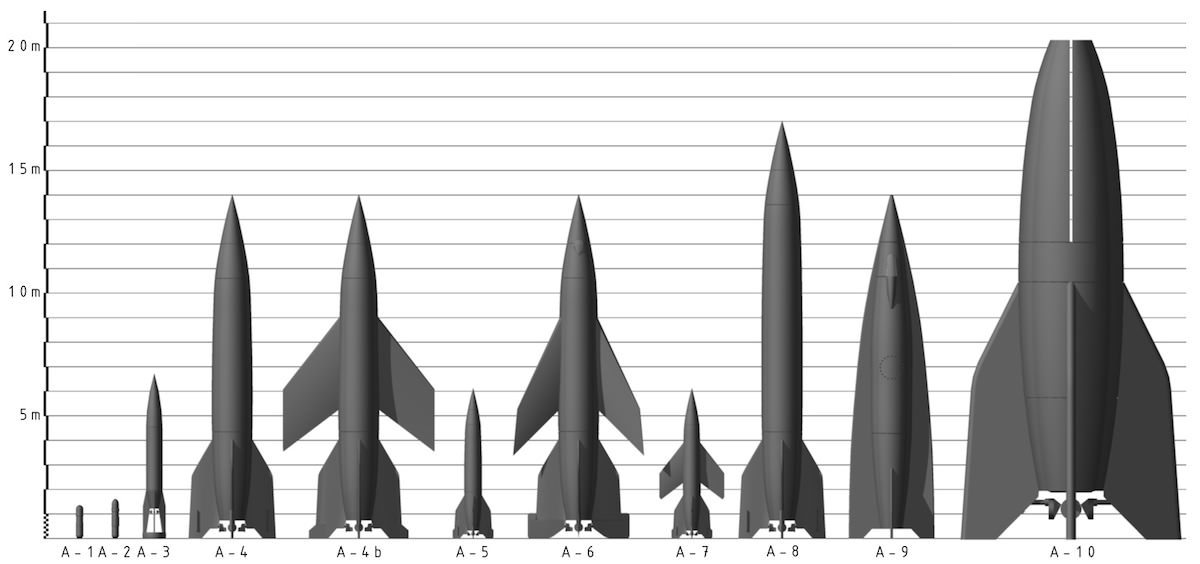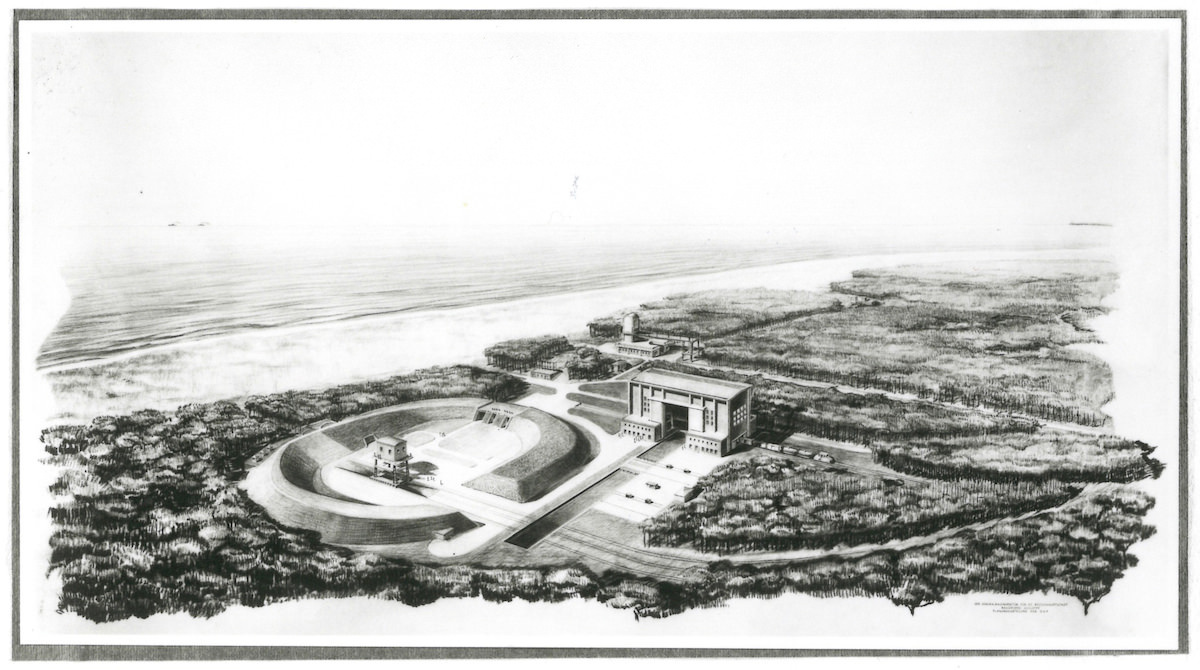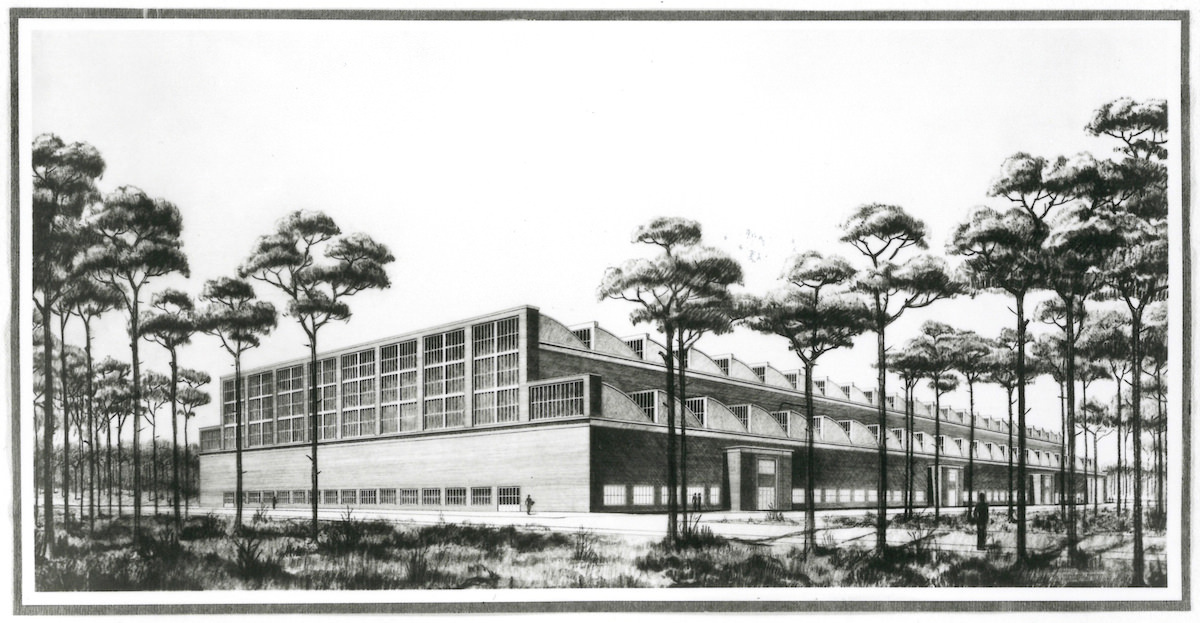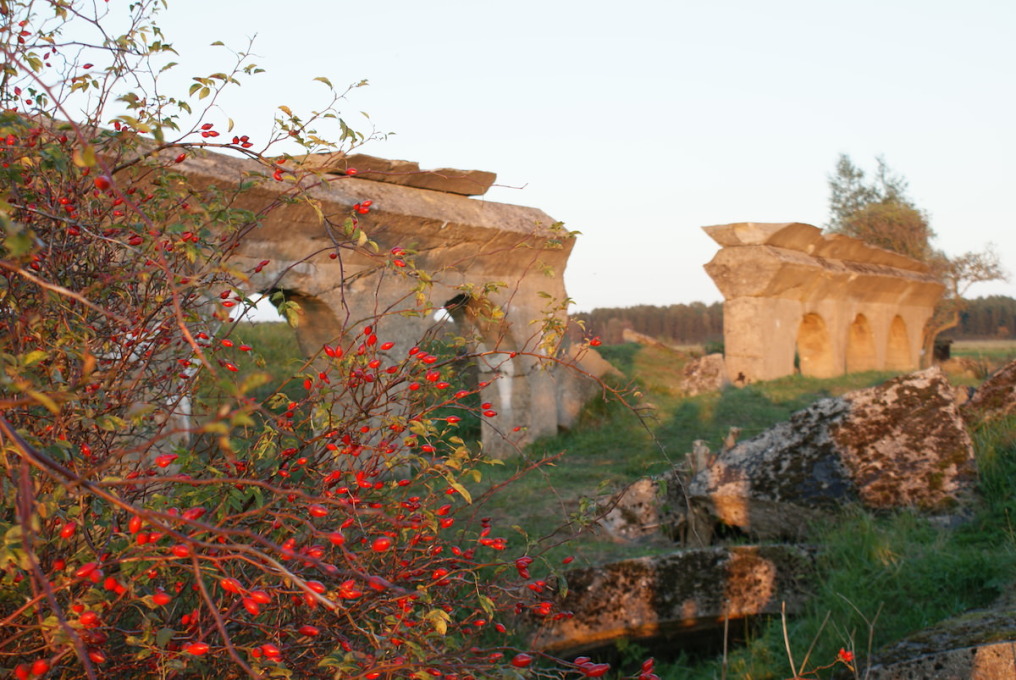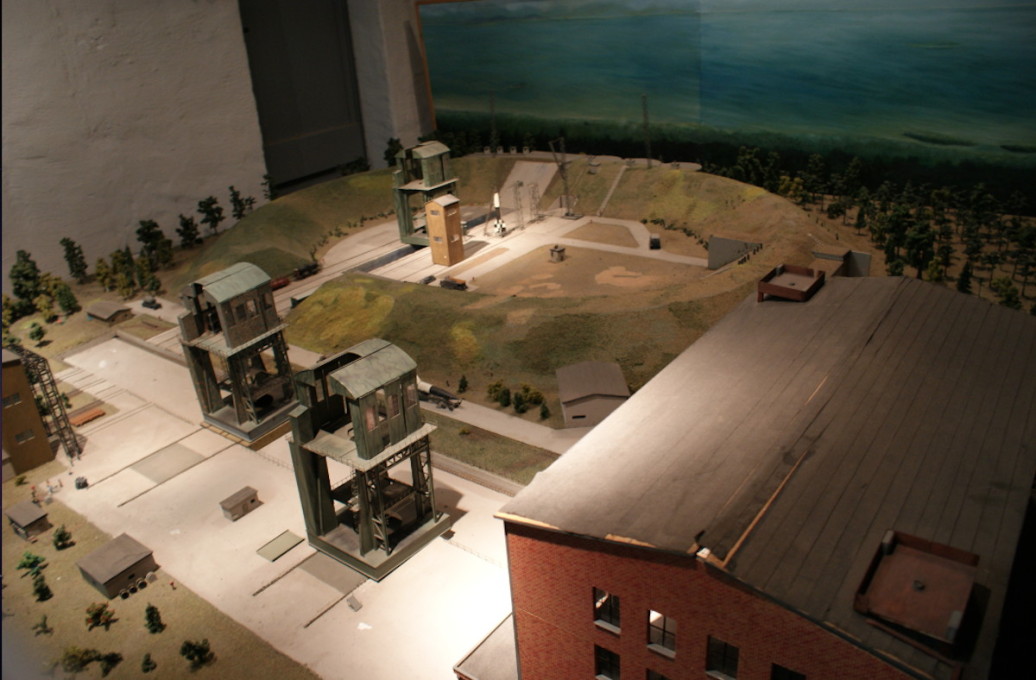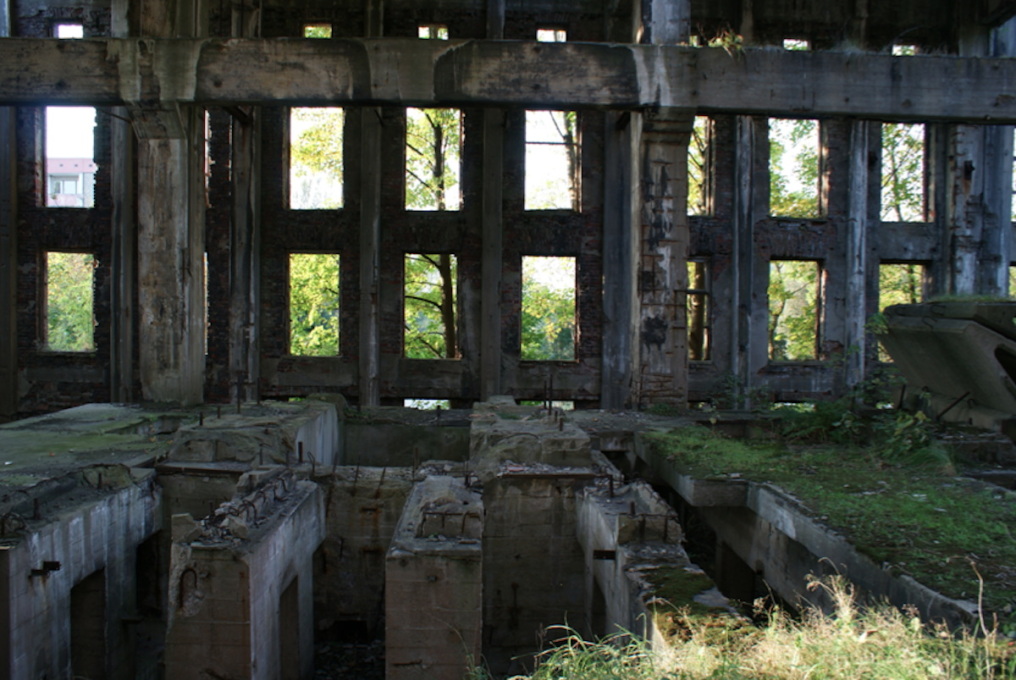The Russians were the first in space and the Americans were the first to the Moon, but the first pioneers of the rocket technologies, that made it possible to go into space, belonged to another country, and another time: it was Nazi Germany that launched the first rocket – the V2 weapon – into outer space in 1942. The infamous V2 has a dark and bloody history. Its production alone was directly responsible for the deaths of well over 20,000 people through forced labour – not to mention the deaths of those it was fired upon. The remains of the V2 rocket base still exists, Luise Rellensmann visits and explores the story of a highly dubious feat of human ingenuity.
Brambles growing over bunker ruins, duckweed on the surface of swampy bomb craters and fragmented launching platforms reaching out towards the sea: the northern tip of the Usedom pensinsular on Germany’s Baltic Sea coast is a desolate place. The relics strewn across this no-go area, testify to exceptional human ingenuity and advanced technical prowess from 70 years ago: they are the remains of the Heeresversuchsanstalt Peenemünde (Peenemuende Army Research Centre) from where the first rocket reached space on October 3rd, 1942.
This former weapon testing ground of Peenemünde is widely regarded as the birthplace of modern rocketry and spaceflight. Founded in 1937 as one of five military proving grounds under the German Army Weapons Office, the research there was led by Wernher von Braun (1912-1977), its technical director and the leading rocket scientist of Nazi Germany, who would later be known as the main US space architect and “Father of Rocket Science”.
Today rare bird species like cormorants and sea eagles breed here. However, the nature reserve is still contaminated, and not only in the literal sense by munitions and chemicals: historically too. The entire facility, covering 25 square kilometres and dotted with insane structures, is representative of the megalomania of Hitler’s Germany. These include a development plant, a test series plant, numerous bunkers and accommodation buildings, several test stands and launching pads, as well as the airfield with its infamous V1-ramps. This was all served by an electric S-Bahn railway, one of the most advanced infrastructural systems of the time.
Several buildings in particular stand out. The largest is the old power station, a vast pile of dark red brick cubes, its engine room behind a monumental façade of alternating pilasters and vertical windows – akin to a church. Typical in style of the industrial buildings of Nazi times, it recalls the Siemens buildings designed by Hans Hertlein in Berlin in the late 1920s, whilst other buildings such as the carcass of “production plant 1” have the functional modernism similar to the Volkswagen factory at Wolfsburg. In contrast, across the meadows around the River Peene, the collapsed vaults of nine bunkers built to store V2-rockets, have today acquired the romantic appearance of a ruined Roman viaduct.
Another prominent building, lies in ruins at the entrance of the village Peenemünde, outside the restricted area of the weapon testing ground: the former gas plant, where liquid oxygen fuel was produced.
The Afterlife of Nazi Rocket Technology
But several key structures, such as a supersonic wind channel, the most advanced of its day, were, like von Braun himself and several of his colleagues, whisked off to the United States by the US military at the end of the war. The wind channel was re-erected at White Oaks, Maryland and put to use there. This afterlife of Peenemünde, both in the US and the USSR, seeding the Cold War space race is a whole other story of course, but one increasingly centred around the character of von Braun himself, as ambiguous as the Peenemünde site itself. This opportunist focussing on making his dream of space travel come true, tacitly accepted the deaths of those people who were forced to make and were the target of the V2 rockets he developed. For, of the forced labourers and concentration camp internees used as slave labour on missile production (transferred to an underground concentration camp Mittelbau-Dora in the Thuringian Harz after British bombing raids in 1942) an estimated 20,000 lost their lives. Whilst from September 1944, the over 3.000 V2s launched as military rockets against London, Antwerp and Liège, caused an estimated 9.000, mostly civilian, deaths.
The most historically loaded site at Peenemünde is Pruefstand VII (launching pad VII), from where the V2 rocket, the world’s first long-range ballistic missile, was launched. The rocket, known originally under the technical name Aggregat-4, shot up more than 90 kilometres into the atmosphere, covering an 190 kilometres in range on its test flight, which made it the first rocket to reach outer space.
Although there is not much left today of the Pruefstand VII structure, and its site is not accessible to tourists, it has attracted a mythical aura marking this first rocket launch into space.
But with the Kraftwerk today containing The Peenemünde Historical and Technical Information Centre, opened in 1992 and attracting up to 200,000 visitors annually, the hope is it that, whilst neo-Nazis may be amongst them, the conservation and interpretation of the site for the public, works to counteract any myth built up around the place, presenting a more sober view of the grim reality behind what was an undoubted technological marvel.
- Luise Rellensmann, Berlin
For further space-related stories from uncube see issue no.19 SPACE




